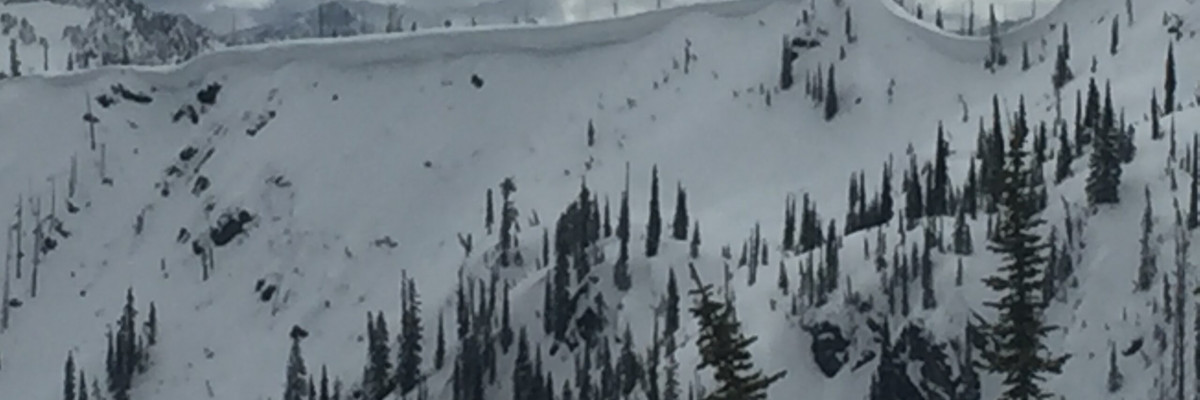The current avalanche danger is MODERATE above 7,000ft and on wind loaded terrain. Human triggered avalanches are possible in specific areas. The avalanche danger at all other locations is LOW. This danger rating does not apply to operating ski areas, expires at midnight tonight and is the sole responsibility of the U.S. Forest Service.
Good morning, this is Logan King with the West Central Montana Avalanche Center’s avalanche advisory for Tuesday, March 8th, 2016.
Weather and Snowpack
Winter is making a subtle return to West Central Montana and has brought a trace to 3 inches of snow over night. Currently ridge top winds are light and gusting to the low teens from the W-WNW at Point Six and Deer Mountain. As of 5am this morning mountain temperatures are ranging from 22-30 degrees and light snow is expected through the early morning hours today.
Windslabs are the primary avalanche concern today. Windslabs are small and stubborn but are still lurking and warrant close attention. Windslabs are primarily located in terrain above 7,000ft. Carefully assess any terrain above 7,000ft that appears to be wind affected to determine if a windslab is present and reactive. Of particular concern are areas that are lightly wind affected and harboring persistent weak layers.
Persistent grains that are adjacent to the uppermost melt freeze crust (presidents day M/F crust) continue to be intermittently reactive. Areas that have a thin layer of soft wind load or the facets are nearer to the surface continue to occasionally be reactive in propagation tests (ECTP 12 pic). Avoid areas where facets are adjacent to the crust and close to the snow surface as well as areas that have a small soft windslab sitting on the melt freeze crust facets. The only way to know if these conditions exists is to dig pits, so carefully evaluate the snow and perform stability tests.
Lastly with crust consistently forming on the surface and light new snow over night the new surface snow will be susceptible to loose snow avalanches on terrain steeper than 35 degrees. Carefully evaluate the consequences of getting caught by even a small slide and avoid terrain traps.
Avalanche and Weather Outlook
Light snow is expected to continue through the morning today and will be tapering off later in the afternoon. The next series of snow showers is expected to move in early Wednesday, but snow totals will be unremarkable. More snow is expected as the week progresses but snow levels look to climb later in the week. No major changes are expected to occur in the next couple of days and the avalanche danger will remain the same.
Travis will issue the next avalanche advisory on Thursday.
























